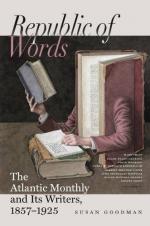Should the history of royal marriages ever be written in a manner proportioned to its importance, a large part of the work would have to be given to the marriages made by various princes of the house of Austria; for those marriages had prodigious effect on the condition of the best portions of the human race, and in the sixteenth century it seemed that they were about to bring, not only most of Europe, but nearly all America, a large part of Asia, and not a little of Africa under the rule of one family, and that family by no means superior to that of Valois or the Plantagenets. The extraordinary luck of the house of Austria in turning marriage into a source of profit was early remarked; and in the latter part of the fifteenth century, long before the best of the Austrian matrimonial alliances were made, Matthias Corvinus, the greatest of Hungarian kings, wrote a Latin epigram on the subject, which was even more remarkable as a prediction than as a statement of fact; for it was as applicable to the marriage of Napoleon I. and Maria Louisa, and to that of Philip the Fair and Juana the Foolish, as it was to that of Maximilian and Mary.[25] It is from the Styrian line of the Austrian house that all princes of that house who have reigned for four centuries and upward are descended. Ernest, third son of that Leopold who was defeated and slain at the battle of Sempach by the Swiss, became master of the duchies of Styria, Carniola, and Carinthia. He was a pious prince, and made a pilgrimage to Palestine, after the superstitious fashion of his time. He was a quarrelsome prince, and kept himself in a state of perpetual hot water with his brother. He was an amorous and a chivalrous prince, and, having lost his first wife, he got him a second after a knightly fashion. Having heard much of the material and mental charms of the Princess Cymburga, a Polish lady who had the blood of the Yagellons in her veins, he went to Cracow in disguise, found that report had not exaggerated her merits, and, prudently making himself known, proposed for her hand, and got it. But Cymburga was not only very clever and very beautiful: she was a muscular Christian in crinoline,—for hoops were known in those days among the Poles, or




